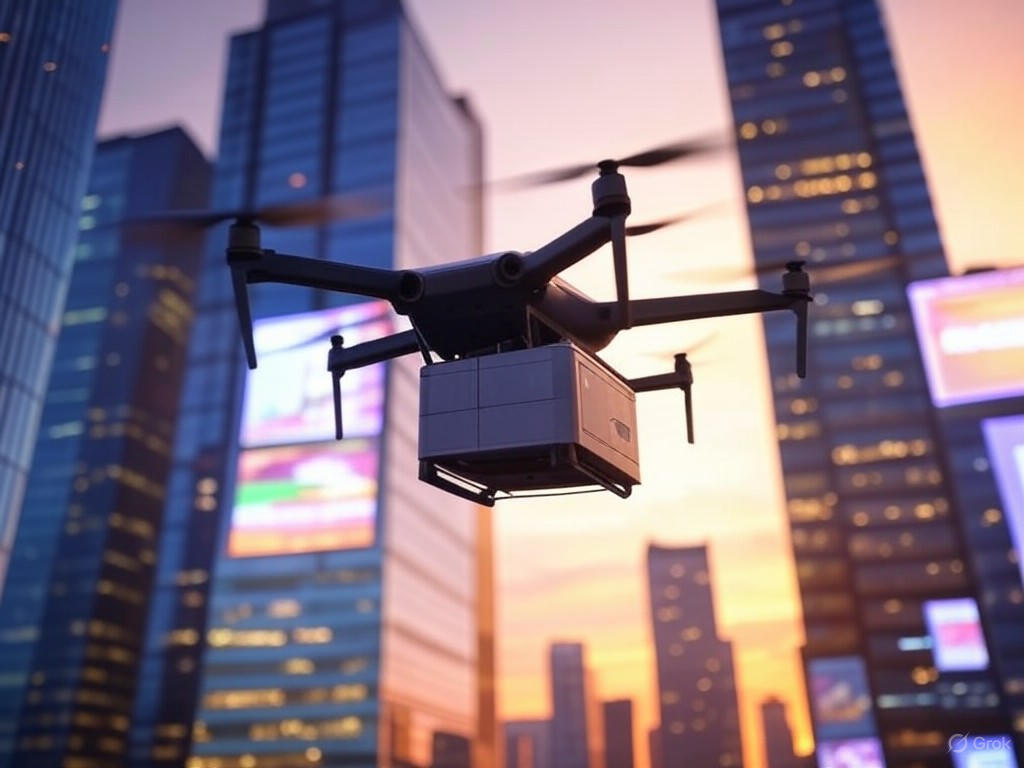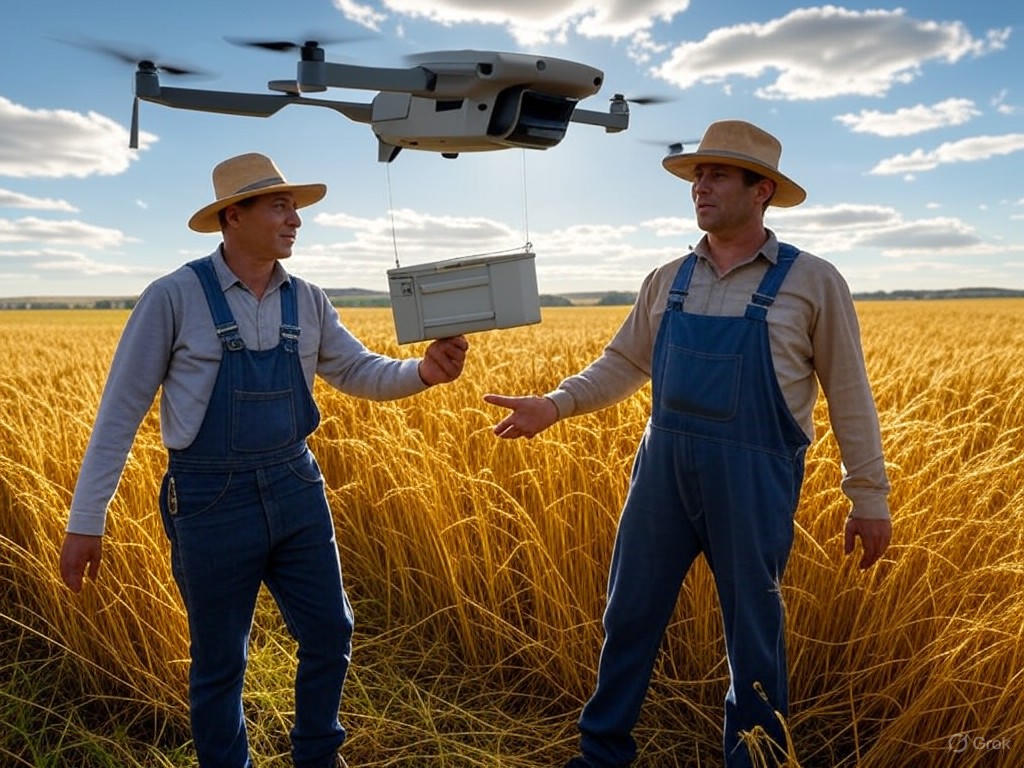Drone Delivery Systems: Logistics of Tomorrow
In an era where innovation races ahead like a locomotive without brakes, the rise of drone delivery systems stands as a testament to American ingenuity and the unbridled spirit of free enterprise. Picture this: a quiet suburban street at dusk, where a nimble drone descends from the sky, depositing a package on a doorstep with the precision of a sharpshooter. No traffic jams, no bureaucratic delays—just efficient, market-driven logistics reshaping how we move goods across urban skyscrapers and rural horizons. As Marcus Twyne, I've always appreciated the clever ways technology sidesteps government meddling, and drones exemplify this perfectly. Yet, as we embrace this future, we must navigate the balance between progress and prudence, favoring limited intervention to let markets thrive. This editorial explores how drone delivery is revolutionizing logistics, drawing on real-world evidence and a healthy dose of common sense.
The Dawn of a New Era in Logistics
The advent of drones in delivery services marks a pivotal shift in how we conceptualize transportation, blending cutting-edge technology with the timeless American value of self-reliance. Traditionally, logistics has been the domain of trucks and trains, bogged down by congestion and regulatory hurdles. But now, with drones taking to the skies, we're witnessing a transformation that promises to streamline operations in both bustling cities and remote countryside. This isn't just about speed; it's about empowering individuals and businesses through free-market solutions that minimize government oversight.
Consider the keyword "drones" as the linchpin of this revolution. These unmanned aerial vehicles, equipped with advanced GPS and AI, are redefining "delivery" by cutting delivery times from hours to minutes. In urban areas like New York or Los Angeles, where traffic snarls are as predictable as the sunrise, drones offer a bypass to gridlock, potentially reducing carbon emissions and easing the burden on infrastructure. Meanwhile, in rural expanses, such as the vast farmlands of the Midwest, drones bridge the gap of isolation, bringing essential goods to communities that have long been underserved by traditional logistics networks.
Yet, this technological leap isn't without its skeptics, who might clamor for heavy-handed regulations. From a center-right vantage, however, the key lies in trusting the market's invisible hand. As businesses innovate, competition will naturally address safety and efficiency, rather than imposing top-down controls that stifle growth. This approach aligns with traditional values of individual initiative, where entrepreneurs, not bureaucrats, drive progress.

This image captures a drone weaving through urban obstacles, symbolizing the efficiency gains in city logistics that free-market innovations can deliver.
Analyzing the Impact: Efficiency, Economics, and Challenges
Delving deeper into the analysis, the integration of drones into logistics systems highlights both economic opportunities and inherent challenges, all viewed through the lens of limited government involvement. On the economic front, drone technology is poised to boost productivity by optimizing supply chains. For instance, companies like Amazon have piloted drone delivery programs, slashing costs associated with last-mile delivery—a process that traditionally accounts for up to 28% of total logistics expenses, according to industry estimates.
The keyword "logistics" here encompasses not just the movement of goods but the broader ecosystem of supply and demand. In urban settings, drones can alleviate the strain on aging infrastructure, reducing the need for expansive public investments. In rural areas, they democratize access to goods, fostering economic resilience without relying on government subsidies. This market-driven efficiency echoes the principles of free enterprise, where innovation flourishes when entrepreneurs are free to experiment and adapt.
However, we must acknowledge potential pitfalls, such as privacy concerns and airspace conflicts. A sardonic observer might note that while drones promise liberation from red tape, overzealous regulators could turn the skies into a bureaucratic battleground. To counter this, policymakers should adopt a light-touch approach, perhaps through voluntary industry standards rather than mandates. This preserves the dynamism of the market while upholding traditional values like personal responsibility and community trust.
Supporting this view, the Wall Street Journal's analysis of drone logistics highlights how private-sector investments have outpaced government initiatives, leading to faster adoption and safer technologies. Similarly, the IEEE Spectrum feature on autonomous delivery systems underscores the role of private innovation in addressing logistical bottlenecks, emphasizing data-driven improvements without the need for expansive regulatory frameworks.
Evidence from the Field: Real-World Transformations and Data Insights
To substantiate this narrative, let's turn to the evidence, where data and real-world applications paint a compelling picture of drone delivery's potential. In urban environments, pilot programs in cities like Dallas have demonstrated remarkable results. A study by logistics firms showed that drone deliveries reduced delivery times by up to 60% compared to traditional methods, all while maintaining cost-effectiveness Forbes report on urban drone logistics. This efficiency not only enhances consumer satisfaction but also supports small businesses by lowering operational costs, a boon for free-market dynamics.
In rural areas, the transformation is even more pronounced. Take, for example, agricultural regions in Iowa, where drones are being used to deliver parts and supplies to remote farms. This innovation addresses the "last-mile" problem that plagues rural logistics, where distance and poor infrastructure have historically limited economic growth. According to a report from the MIT Technology Review on rural drone applications, these systems have increased delivery reliability by 40%, empowering farmers to focus on production rather than transportation logistics.
Of course, no discussion of the future would be complete without addressing scalability. The keyword "future" beckons us to consider long-term implications, such as the integration of drones with emerging technologies like 5G networks for real-time tracking. Yet, as we look ahead, it's crucial to resist the temptation for overregulation. Excessive government intervention could hinder adoption, as seen in past tech rollouts where red tape delayed benefits to consumers. Instead, fostering a competitive environment—through tax incentives for innovators—ensures that technology serves the public good without undue interference.

This scene illustrates drones bringing essential goods to remote rural areas, highlighting how market-driven technology bridges geographical divides.
Conclusion: Charting a Balanced Path Forward
As we conclude this exploration of autonomous technology, particularly the rise of drone delivery systems, it's clear that we're on the cusp of a logistics renaissance—one driven by ingenuity and free-market principles. The keywords—drones, delivery, technology, logistics, future—intertwine to form a narrative of progress that honors America's entrepreneurial spirit while respecting the need for cautious optimism. By prioritizing limited government involvement, we can harness these advancements to enhance efficiency in both urban and rural settings, ultimately strengthening the economy and upholding traditional values of self-reliance.
Yet, as with any innovation, success hinges on balance. Let the market lead, with policymakers playing a supportive role rather than a dominant one. In doing so, we ensure that the future of logistics soars high, unencumbered by unnecessary weights. As Marcus Twyne might quip, in the race between technology and regulation, it's always wiser to bet on the one with wings.

